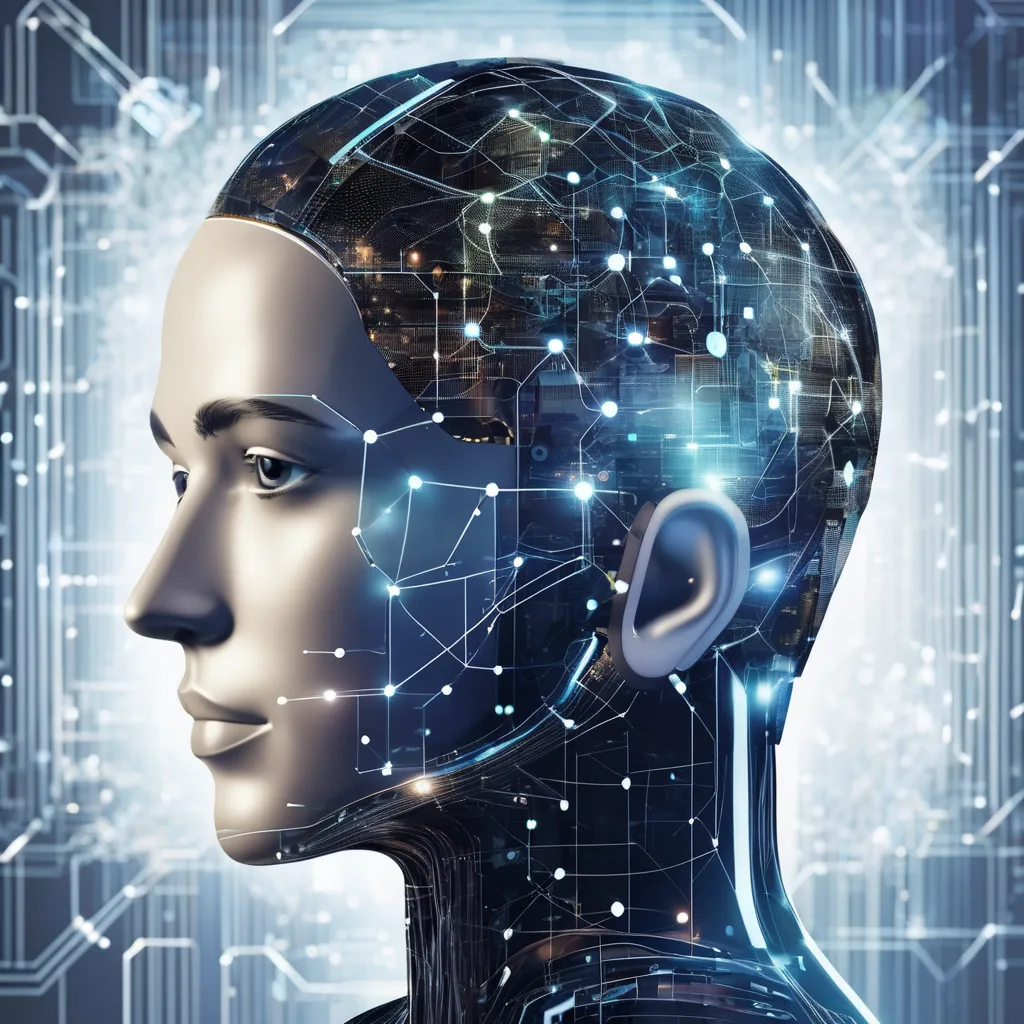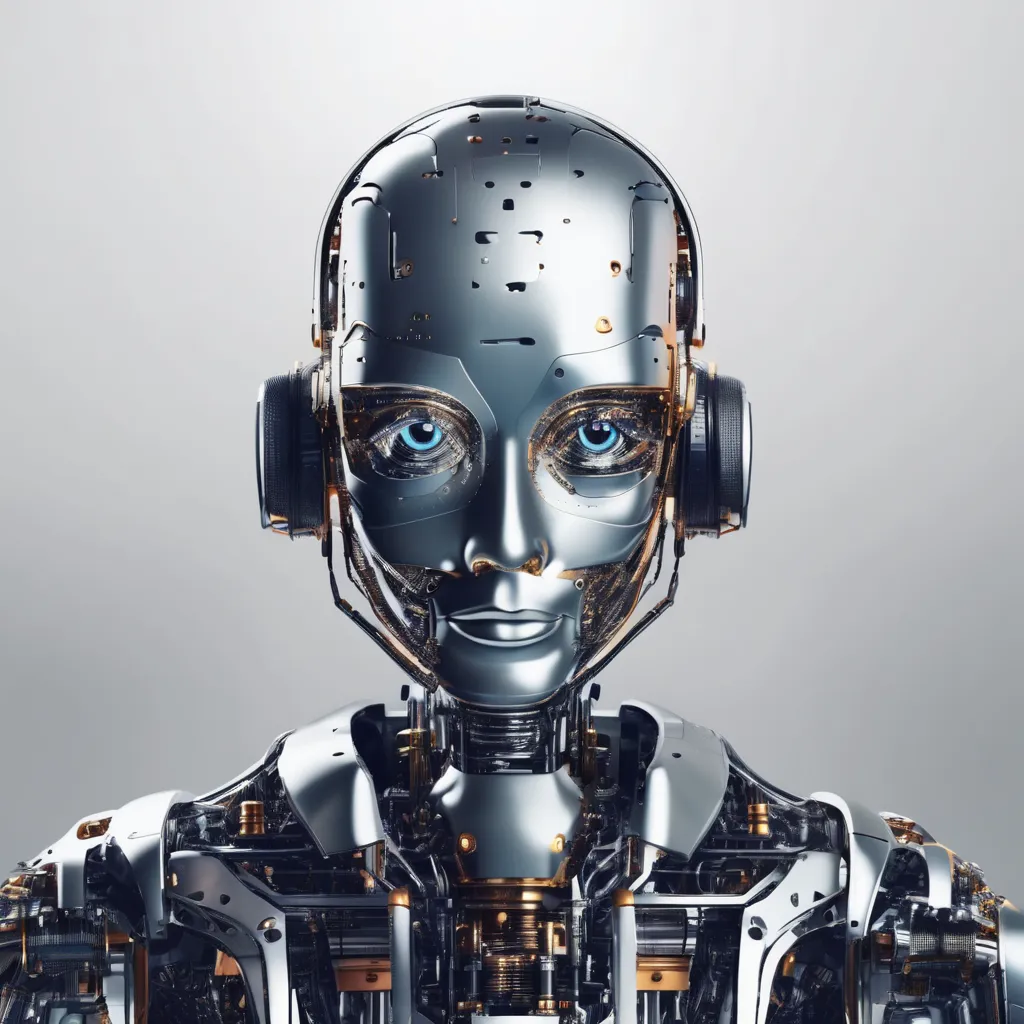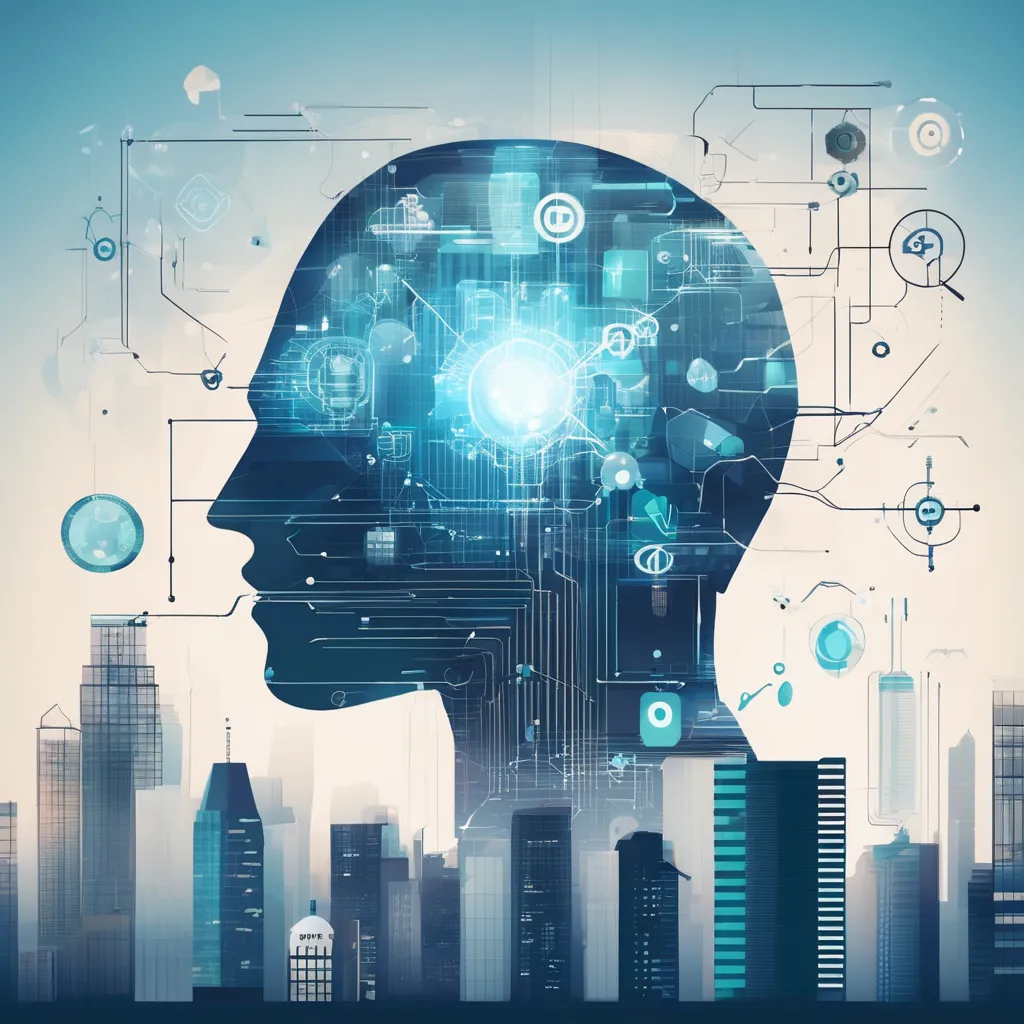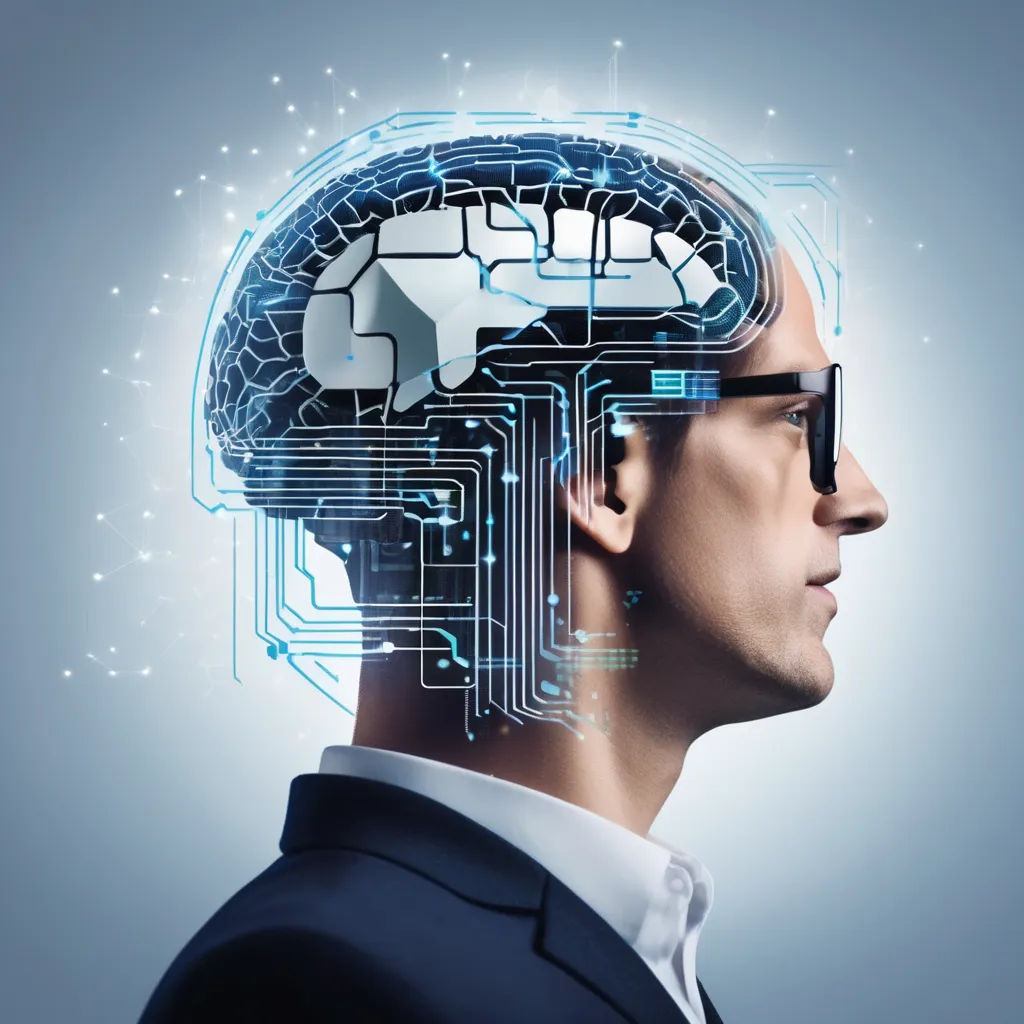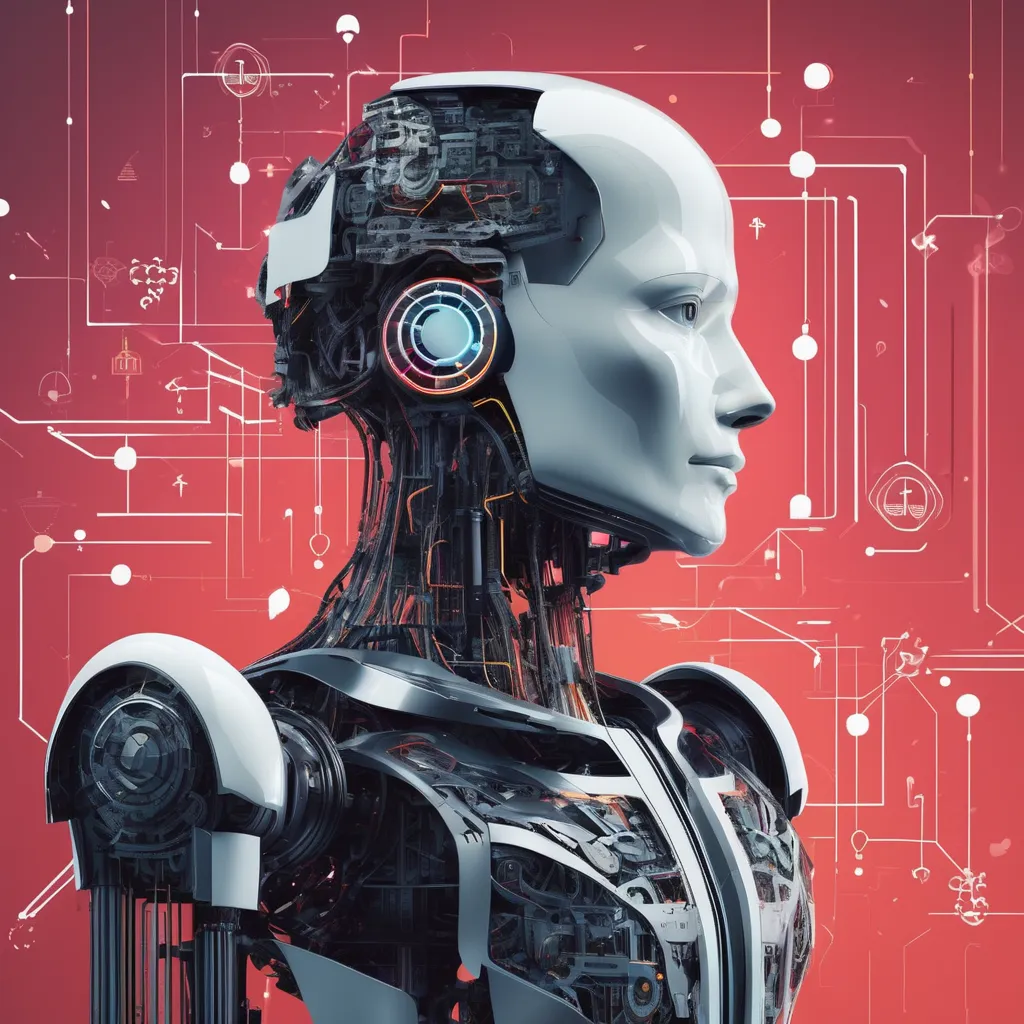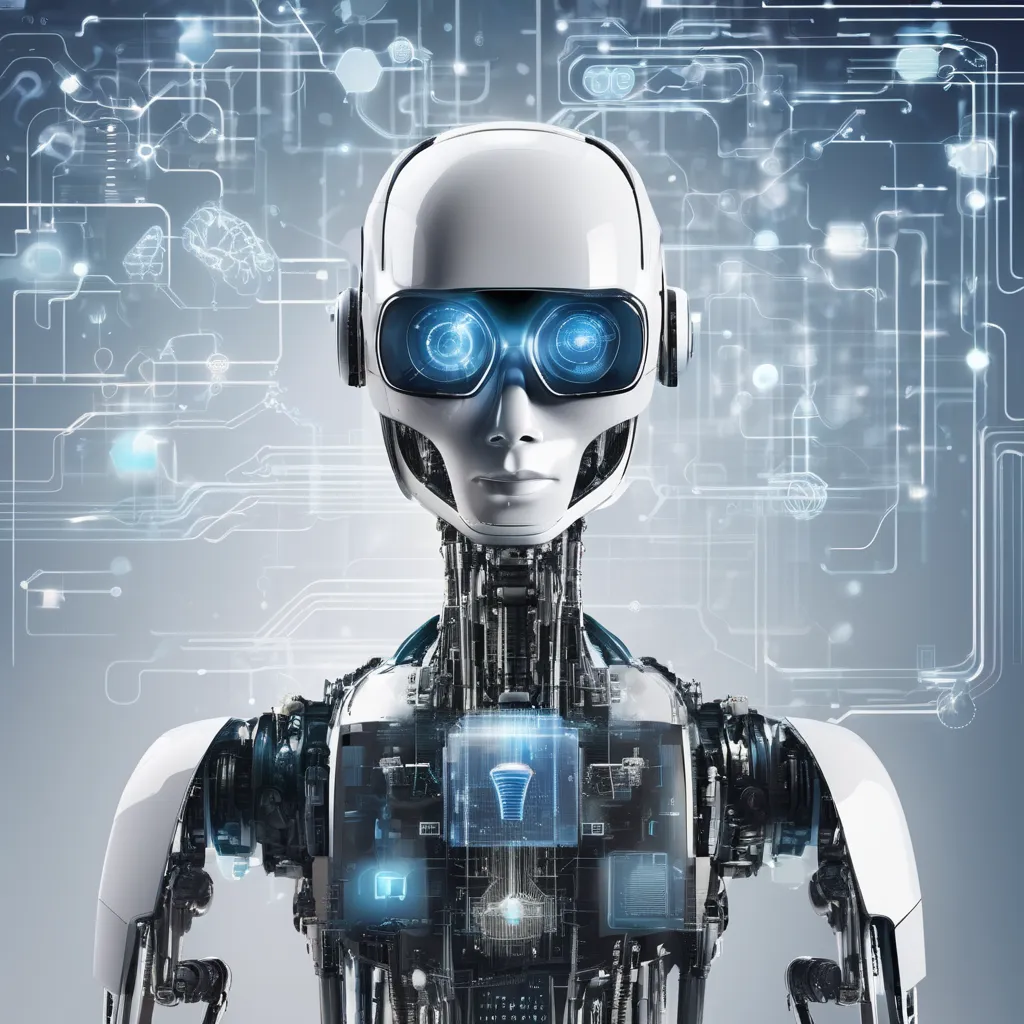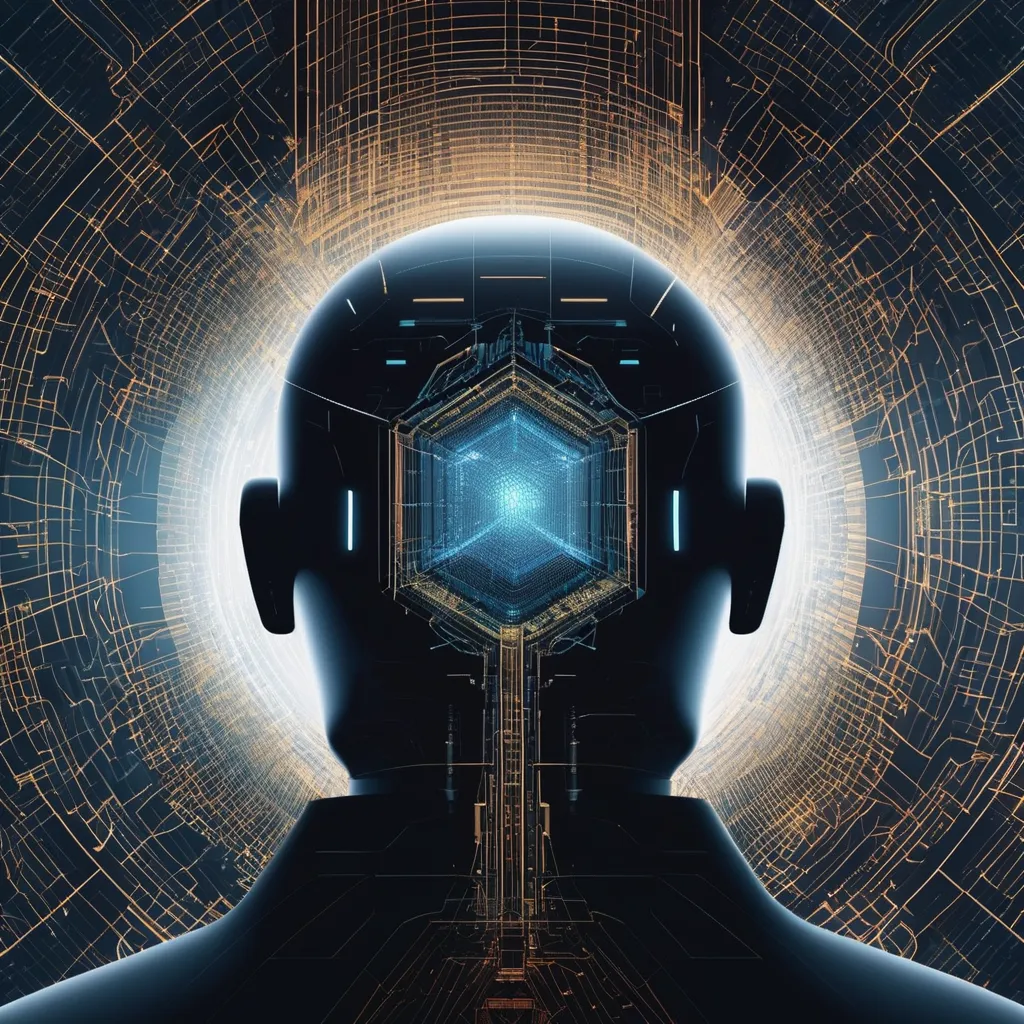Exploring the Boundaries of AI Capabilities
Introduction
Artificial Intelligence (AI) has emerged as a transformative force, reshaping industries, enhancing technological capabilities, and redefining human-computer interactions. From self-driving cars to virtual assistants, AI permeates various aspects of daily life, aiming to emulate and exceed human cognitive abilities. This article delves into the boundaries of AI capabilities, examining its historical evolution, underlying technologies, and multifaceted applications across different domains.
Introduction to Artificial Intelligence Capabilities
Artificial Intelligence, at its core, involves the simulation of human intelligence processes by machines, particularly computer systems. These processes include learning (the acquisition of information and rules for using the information), reasoning (using the rules to reach approximate or definite conclusions), and self-correction. AI capabilities extend to various fields such as Machine Learning (ML), Natural Language Processing (NLP), computer vision, and robotics, each facilitating unique functionalities in intelligent systems.
The expanse of AI capabilities ranges from rule-based systems that follow scripted paths to advanced machine learning algorithms driven by data. These capabilities empower AI to perform tasks that traditionally required human intelligence, such as recognizing speech, interpreting visual inputs, making decisions, and translating languages. The relentless progress in AI paves the way for future innovations, pushing the boundaries of what machines can achieve.
Historical Development of AI: From Theory to Practice
The conceptual foundation of AI can be traced back to ancient myths and history, where artificial beings with cognitive abilities appeared in folklore. However, the academic study of AI began in earnest in the mid-20th century. Alan Turing’s foundational work, including the Turing Test proposed in 1950, set the stage for exploring machine intelligence.
The inception of AI as an academic discipline is credited to the 1956 Dartmouth Conference, where the term “Artificial Intelligence” was coined. Early AI programs, such as the Logic Theorist and General Problem Solver, demonstrated rudimentary problem-solving abilities but lacked practical application due to computational limitations.
The evolution of AI continued through several phases, marked by periods of optimism and subsequent “AI winters” characterized by reduced funding and research interest. The resurgence of AI in the 21st century, propelled by advancements in computational power, explosion of data, and novel algorithms, has transformed theoretical constructs into practical applications that permeate multiple aspects of modern life.
Key Components and Technologies Behind AI Systems
AI systems comprise various components that collaboratively enable intelligent behavior. At the core of these systems is the data, indispensable for training machine learning models. Data preprocessing, feature extraction, and selection are critical steps to ensure the quality and relevance of the datasets used.
Algorithms form the backbone of AI, with each type catering to specific AI tasks. Common algorithms include regression models, decision trees, neural networks, and clustering methods. The choice of algorithm significantly impacts system performance, given appropriate alignment with the problem at hand.
Computational power, facilitated by advancements in hardware such as Graphics Processing Units (GPUs) and Tensor Processing Units (TPUs), plays a crucial role. High-performance computing enables the training of complex models within feasible timeframes.
Additionally, frameworks and libraries such as TensorFlow, PyTorch, and sci-kit-learn provide robust platforms for developing, training, and deploying AI models. These tools have democratized AI development, allowing both researchers and practitioners to innovate and experiment with AI solutions.
Machine Learning and Its Role in Enhancing AI
Machine Learning (ML) is the driving force behind many modern AI applications, enabling systems to learn from data and improve their performance over time. ML leverages statistical methods to build models that identify patterns, classify data, and make predictions.
Supervised learning, a primary ML technique, involves training models on labeled datasets, allowing them to map input features to known output labels. Examples include image classification and speech recognition. Unsupervised learning, on the other hand, identifies underlying structures in unlabeled data, with clustering and association being common methods.
Reinforcement learning represents another vital facet of ML, where agents learn optimal behaviors through rewards and punishments. Notable applications include AlphaGo, which defeated human champions in Go, a game long considered a pinnacle of strategic complexity.
Deep learning, a subset of ML, incorporates deep neural networks with many layers, facilitating the automatic extraction of hierarchical feature representations. This capability has spawned breakthroughs in image recognition, natural language processing, and autonomous systems, significantly enhancing the scope and impact of AI.
Exploring Neural Networks and Deep Learning Algorithms
Neural networks, inspired by the human brain’s structure and operation, comprise layers of interconnected nodes (neurons) that process and transmit information. Each neuron applies an activation function to its inputs and passes the output to subsequent layers, culminating in the final prediction or classification.
Deep learning algorithms leverage multi-layered neural networks (deep neural networks) to model complex, high-level patterns in data. Convolutional Neural Networks (CNNs) are particularly effective for image-related tasks, capturing spatial hierarchies through convolutional layers. Recurrent Neural Networks (RNNs) are adept at handling sequential data, such as time-series analysis and language modeling, due to their ability to retain memory of previous inputs.
Training deep networks involves backpropagation, an algorithm that adjusts neural weights based on the error between predicted and actual outcomes. Optimizers, such as stochastic gradient descent, facilitate this iterative process, enhancing model accuracy over time.
Deep learning’s transformative impact is evident across numerous applications, from enhancing virtual assistants via improved speech recognition to enabling autonomous vehicles through advanced image processing. Its ability to handle unstructured data and perform end-to-end learning continues to expand the boundaries of AI capabilities.
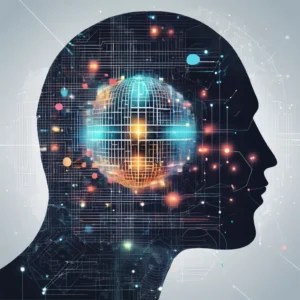
Natural Language Processing: Understanding Human Language
Natural Language Processing (NLP) seeks to enable machines to understand, interpret, and generate human language. This interdisciplinary field combines linguistics, computer science, and AI to address various challenges, including syntax, semantics, and context.
Key tasks in NLP include speech recognition, where spoken language is transcribed into text; machine translation, enabling cross-lingual communication; and sentiment analysis, which interprets the emotional tone of textual data. Named Entity Recognition (NER) and Part-of-Speech (POS) tagging are foundational tasks that facilitate higher-level language understanding.
Transformers, a revolutionary architecture in NLP, have significantly advanced the field. Models such as BERT (Bidirectional Encoder Representations from Transformers) and GPT (Generative Pre-trained Transformer) leverage self-attention mechanisms to capture the context of words in a sentence efficiently. These models have achieved state-of-the-art performance in diverse NLP tasks, emphasizing deep learning’s impact on linguistic understanding.
Despite remarkable progress, NLP continues to grapple with challenges such as ambiguity, context-dependency, and cultural nuances. Ongoing research strives to refine models, enhance multilingual capabilities, and address ethical considerations like bias and privacy in NLP systems.
Computer Vision: Machines Interpreting the Visual World
Computer Vision (CV) encompasses techniques that enable machines to interpret and understand visual information from the world. CV applications range from image classification and object detection to facial recognition and autonomous navigation.
Image classification involves assigning a label to an input image, facilitated by CNNs, which excel in extracting and hierarchically processing image features. Object detection goes a step further, identifying and localizing multiple objects within an image, using frameworks such as YOLO (You Only Look Once) and Faster R-CNN.
Semantic segmentation assigns a class to each pixel in an image, aiding applications like medical imaging and autonomous driving. Instance segmentation extends this task by distinguishing between individual objects of the same class.
Computer vision’s contributions are manifold, including enhancing security through advanced surveillance, enabling augmented and virtual reality experiences, and improving accessibility via assistive technologies. Continual advancements in model architecture and computational efficiency are expanding CV’s reach, bringing sophisticated visual understanding closer to human-level proficiency.
Robotics and AI: Revolutionizing Automation
The integration of AI with robotics is revolutionizing automation, enabling robots to perform complex tasks with precision and adaptability. Robotics merges mechanical engineering, electrical engineering, and computer science to create intelligent agents capable of interacting with their environment.
AI enhances robotic capabilities through perception, planning, and control. Perception involves interpreting sensory data, facilitated by CV and NLP, allowing robots to understand their surroundings and communicate with humans. Planning entails generating action sequences to achieve specific goals, incorporating algorithms from fields like reinforcement learning and optimization.
In manufacturing, AI-driven robots enhance efficiency and accuracy, performing tasks ranging from assembly to quality inspection. Service robots assist in healthcare, hospitality, and domestic settings, undertaking roles such as patient care and housekeeping. Autonomous robots, exemplified by self-driving cars and drones, navigate complex environments using sensor fusion, path planning, and real-time decision-making.
Robotics’ integration with AI heralds a new era of automation, enabling intelligent systems to undertake tasks beyond human capability, enhancing productivity, and transforming industries.
AI in Healthcare: Transformative Medical Applications
AI’s application in healthcare is driving transformative changes, enhancing diagnostics, treatment, and patient care. AI algorithms analyze medical data, identify patterns, and support clinical decision-making, ultimately improving outcomes and operational efficiency.
Machine learning models are employed in diagnostic imaging, detecting anomalies in X-rays, MRIs, and CT scans with high accuracy. AI-driven tools assist radiologists in identifying conditions such as tumors, fractures, and neurological disorders, facilitating early diagnosis and intervention.
In personalized medicine, AI analyzes genomic data to tailor treatments based on individual genetic profiles, optimizing drug efficacy and reducing adverse effects. Predictive analytics in healthcare leverage ML to forecast disease progression and patient deterioration, enabling proactive interventions.
AI-enabled telemedicine platforms enhance remote diagnosis and monitoring, bridging gaps in healthcare access. Natural Language Processing (NLP) assists in extracting meaningful information from clinical notes and electronic health records (EHRs), improving patient history analysis and treatment planning.
The ethical deployment of AI in healthcare necessitates addressing privacy concerns, ensuring algorithm transparency, and mitigating biases. Nevertheless, the potential of AI to revolutionize healthcare remains vast, promising improved patient care and operational efficiencies.
Ethical Considerations in AI Deployment
The deployment of AI systems raises significant ethical considerations that necessitate careful deliberation. As AI increasingly influences critical aspects of life, ensuring fairness, transparency, and accountability becomes paramount.
Bias in AI algorithms is a pressing concern, where training data reflecting societal prejudices can lead to discriminatory outcomes. Efforts to mitigate bias involve diverse and representative datasets, algorithmic fairness techniques, and regular audits.
Transparency in AI decision-making is essential, particularly in high-stakes applications like healthcare and legal settings. Explainable AI (XAI) aims to make model predictions interpretable, allowing stakeholders to understand and trust AI-driven decisions.
Privacy concerns arise from the vast amounts of personal data collected and processed by AI systems. Implementing robust data protection measures, adhering to regulations such as GDPR, and minimizing data usage are critical steps to safeguard privacy.
The ethical use of AI also encompasses considerations of autonomy, ensuring that AI systems augment rather than undermine human decision-making. Establishing ethical guidelines, fostering interdisciplinary collaborations, and engaging in public discourse are vital to navigating the ethical landscape of AI deployment.
The Impact of AI on Employment and the Workforce
AI’s impact on employment and the workforce is multifaceted, presenting both opportunities and challenges. While AI automation has the potential to enhance productivity and create new job categories, it also poses risks of job displacement and skill obsolescence.
AI-driven automation streamlines repetitive, routine tasks, enabling workers to focus on complex, creative, and strategic activities. However, sectors reliant on manual labor, such as manufacturing and logistics, face significant transformation, necessitating workforce reskilling and upskilling.
The rise of AI has catalyzed demand for new roles, including data scientists, AI ethicists, and machine learning engineers. These positions require specialized skills in data analysis, programming, and algorithm development, highlighting the need for continuous education and training.
Collaboration between industry, academia, and policymakers is crucial to managing workforce transitions. Policies promoting lifelong learning, standardized certifications, and social safety nets can mitigate the adverse effects of AI-driven changes. Proactively addressing the dynamics of AI and employment ensures a balanced integration of AI into the workforce, fostering economic growth and societal well-being.

AI in Education: Personalized and Enhanced Learning
AI’s integration into education is transforming learning experiences, enabling personalized and enhanced education tailored to individual needs. AI-driven educational tools provide insights into student performance, identify learning gaps, and recommend customized interventions.
Adaptive learning platforms adjust content delivery based on student progress, offering personalized learning paths that cater to diverse learning styles and paces. These platforms leverage data analytics and machine learning to continuously refine educational content and strategies.
Intelligent tutoring systems offer real-time feedback and support, simulating one-on-one instruction and improving student engagement. AI-powered assessment tools automate grading and provide detailed feedback, freeing educators to focus on student interaction and curriculum development.
Natural Language Processing (NLP) enhances language learning through conversational agents and language translation tools. Virtual classrooms and AI-enabled collaboration platforms facilitate interactive and remote learning, extending educational access to global audiences.
Despite its potential, the deployment of AI in education warrants addressing privacy concerns, ensuring equitable access, and fostering human-centered learning environments. The future of AI in education promises a more tailored, engaging, and inclusive educational landscape.
Artificial Intelligence in Finance: Risk Management and Beyond
AI’s application in finance spans risk management, fraud detection, investment strategies, and customer service, revolutionizing the financial industry. AI algorithms analyze vast datasets, identifying patterns and insights that inform decision-making and operational efficiencies.
In risk management, AI models predict credit risk, market volatility, and operational risks, enabling proactive risk mitigation. Machine learning techniques identify anomalous transactions, enhancing fraud detection and prevention efforts.
Algorithmic trading uses AI to execute trades at high speeds and optimal prices, leveraging market data and predictive analytics. AI-driven robo-advisors offer personalized investment advice and portfolio management, democratizing financial planning services.
Customer service in finance benefits from AI-powered chatbots and virtual assistants, providing 24/7 support and automating routine inquiries. Natural Language Processing (NLP) facilitates sentiment analysis, enhancing customer experience and engagement strategies.
The ethical and regulatory implications of AI in finance necessitate robust governance frameworks, transparency, and accountability measures. As AI continues to shape the financial landscape, its potential to drive innovation, efficiency, and inclusion remains profound.
Legal Implications of Advanced AI Technologies
The proliferation of advanced AI technologies raises significant legal implications that require comprehensive regulatory frameworks. AI’s influence permeates various legal domains, including privacy, intellectual property, liability, and accountability.
Privacy concerns arise from AI’s extensive data collection and processing capabilities. Legal frameworks such as the General Data Protection Regulation (GDPR) in the EU mandate stringent data protection practices, emphasizing user consent, transparency, and data minimization.
Intellectual property (IP) considerations involve the ownership and protection of AI-generated creations. Determining the IP rights of AI-developed inventions or artistic works presents novel challenges, necessitating adaptations to existing laws.
Liability in AI deployment encompasses responsibility for AI-driven actions and decisions. Establishing clear liability frameworks ensures accountability for harm caused by AI systems, whether due to algorithmic errors, biased outputs, or unforeseen consequences.
The regulation of AI necessitates a balance between fostering innovation and safeguarding public interests. Interdisciplinary collaboration among technologists, legal experts, and policymakers is essential to crafting adaptive, forward-looking legal frameworks that address the unique challenges posed by advanced AI technologies.
AI and Big Data: Analyzing Massive Datasets
The synergy between AI and big data is driving transformative insights and innovations across various domains. Big data refers to the massive volumes of structured and unstructured data generated from diverse sources, while AI provides the analytical tools to extract actionable knowledge from this data.
AI techniques, such as machine learning and deep learning, analyze big data to uncover patterns, trends, and correlations. These insights inform strategic decision-making, optimize operations, and foster innovation across industries.
In healthcare, AI analyzes genomic data, electronic health records (EHRs), and medical imaging, advancing personalized medicine and predictive analytics. In finance, AI enhances fraud detection, credit scoring, and market analysis through real-time data analytics.
AI-driven big data analysis also impacts retail, optimizing supply chains, personalizing customer experiences, and predicting market trends. In transportation, AI analyzes traffic data, enhancing route planning, and reducing congestion.
The integration of AI and big data necessitates robust data management practices, including data quality assurance, privacy protection, and ethical considerations. Leveraging the power of AI to analyze big data holds the promise of unlocking unprecedented insights and driving societal and economic advancements.
Exploring General AI vs. Narrow AI
AI can be categorized into General AI (Artificial General Intelligence, AGI) and Narrow AI (Artificial Narrow Intelligence, ANI), each representing different levels of cognitive capabilities. Understanding the distinction between these categories is essential to appreciate the current state and future trajectory of AI development.
Narrow AI refers to AI systems designed to perform specific tasks or solve particular problems within a defined domain. Examples include virtual assistants like Siri, recommendation systems, and autonomous vehicles. Narrow AI excels in its designated functions but lacks the versatility to perform beyond its trained tasks.
General AI, on the other hand, aspires to emulate human cognitive abilities across a wide range of tasks. AGI systems would understand, learn, and apply knowledge in various contexts, demonstrating human-like adaptability and reasoning. AGI remains a theoretical construct, with current research primarily focused on advancing narrow AI capabilities.
The development of AGI poses significant scientific, ethical, and societal challenges, including ensuring safety, aligning AI objectives with human values, and mitigating existential risks. While AGI represents the ultimate vision of AI researchers, the continued advancement of narrow AI offers immediate, tangible benefits across diverse applications.
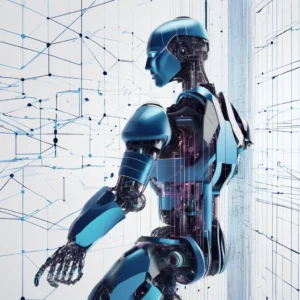
Security Challenges in the Age of AI
The advent of AI introduces novel security challenges that necessitate vigilant risk management and mitigation strategies. AI systems, while offering enhanced capabilities, also present vulnerabilities that malicious actors can exploit.
Adversarial attacks represent a significant threat, where small perturbations to input data can deceive AI models into making incorrect predictions. These attacks highlight the need for robust defenses, including adversarial training and anomaly detection.
AI-powered cyberattacks leverage machine learning to automate and enhance attack strategies, such as phishing and malware dissemination. AI-driven defense mechanisms are essential to counter these sophisticated threats, employing techniques like intrusion detection and threat intelligence.
Data security is paramount, considering AI’s reliance on large datasets. Ensuring data integrity, confidentiality, and availability through encryption, access controls, and secure data storage is crucial to safeguarding AI systems.
Ethical hacking, security audits, and continuous monitoring are vital practices to identify and address AI security vulnerabilities. Collaboration between AI developers, cybersecurity experts, and policymakers is critical to establishing comprehensive security frameworks that protect AI systems and their users.
The Future of Human-AI Collaboration
The future of human-AI collaboration envisions symbiotic partnerships where AI augments human capabilities, fostering innovation, efficiency, and creativity. This collaboration spans various domains, from healthcare and education to manufacturing and creative arts.
In healthcare, AI assists clinicians in diagnosis, treatment planning, and patient monitoring, enhancing precision and enabling personalized care. Human expertise, combined with AI’s analytical prowess, leads to improved patient outcomes and operational efficiencies.
Educational environments benefit from AI-driven personalized learning and intelligent tutoring systems, providing tailored support and enhancing student engagement. Educators leverage AI insights to design effective curricula and address individual learning needs.
In manufacturing, collaborative robots (cobots) work alongside humans, performing repetitive or hazardous tasks while humans focus on complex and strategic activities. This partnership enhances productivity, safety, and job satisfaction.
Creative fields, including art, music, and literature, witness AI as a co-creator, offering new tools and inspiration. Human ingenuity, coupled with AI’s generative capabilities, expands the boundaries of creative expression.
The future of human-AI collaboration hinges on ethical considerations, ensuring that AI systems augment rather than replace human roles, fostering trust, transparency, and shared prosperity.
Potential Risks and Threats of AI Systems
While AI holds immense promise, it also presents potential risks and threats that necessitate vigilant management. Addressing these
